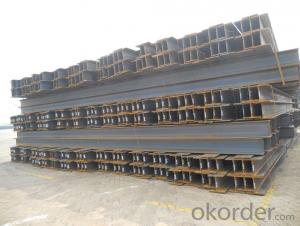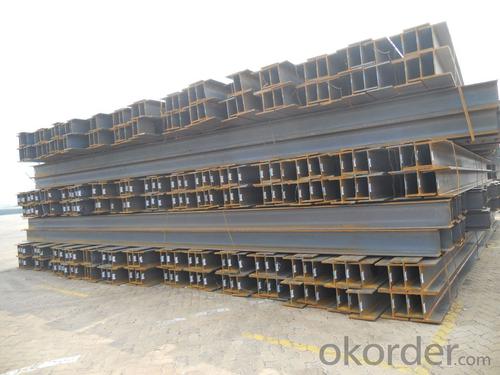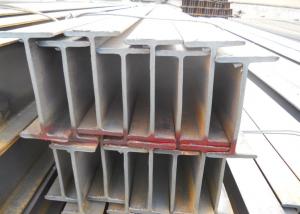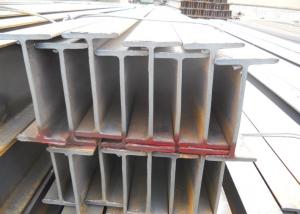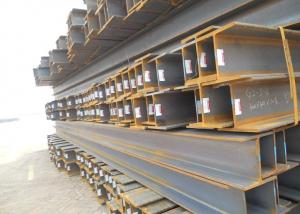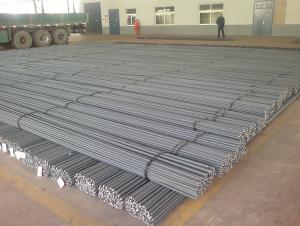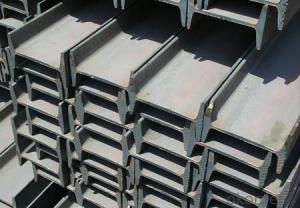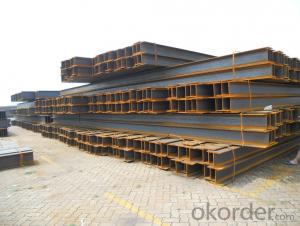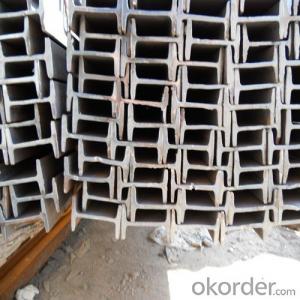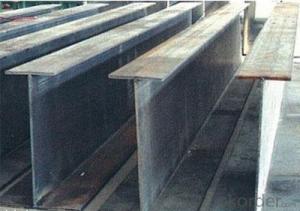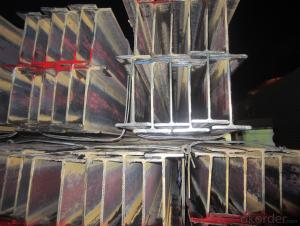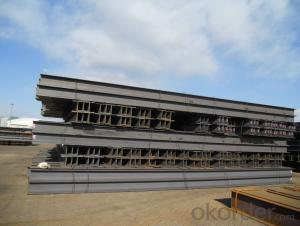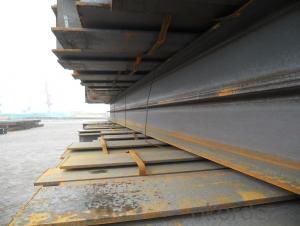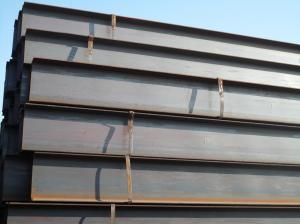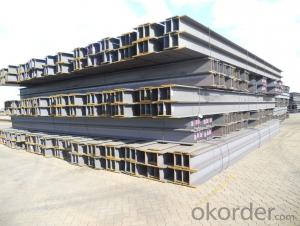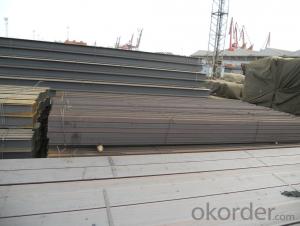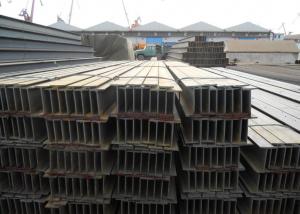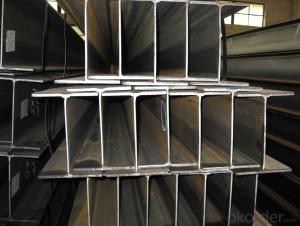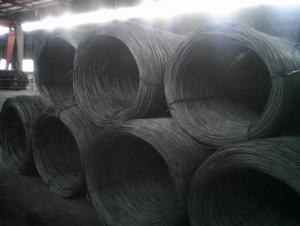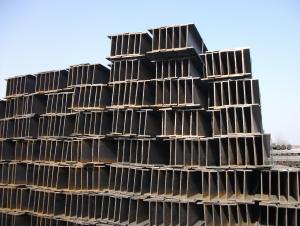High Quality Hot Rolled Jis Steel H Beam
- Loading Port:
- Tianjin
- Payment Terms:
- TT OR LC
- Min Order Qty:
- 25 m.t.
- Supply Capability:
- 1000 m.t./month
OKorder Service Pledge
OKorder Financial Service
You Might Also Like
roduct Description:
Specifications of Hot Rolled Steel H-beam
1. Standard: GB
2. Grade: Q235 or Equivalent
3. Length: 6m,10m, 12m as following table
4. Invoicing on theoretical weight or actual weight as customer request
5.Payment: TT or L/C
6. Sizes:
Category | model (height*width)/ (mm×mm) | Section size/mm | Cross-section area/cm2 | Theoretical Weight/(kg/m) | Moment of inertia/cm4 | radius/cm | Section modulus/cm3 | |||||||
H | B | t1 | t2 | r | Ix | Iy | ix | iy | Wx | Wy | ||||
HW | 100×100 | 100 | 100 | 6 | 8 | 8 | 21.59 | 16.9 | 386 | 134 | 4.23 | 2.49 | 77.1 | 26.7 |
125×125 | 125 | 125 | 6.5 | 9 | 8 | 30.00 | 23.6 | 843 | 293 | 5.30 | 3.13 | 135 | 46.9 | |
150×150 | 150 | 150 | 7 | 10 | 8 | 39.65 | 31.1 | 1620 | 563 | 6.39 | 3.77 | 216 | 75.1 | |
175×175 | 175 | 175 | 7.5 | 11 | 13 | 51.43 | 40.4 | 2918 | 983 | 7.53 | 4.37 | 334 | 112 | |
200×200 | 200 | 200 | 8 | 12 | 13 | 63.53 | 49.9 | 4717 | 1601 | 8.62 | 5.02 | 472 | 160 | |
200 | 204 | 12 | 12 | 13 | 71.53 | 56.2 | 4984 | 1701 | 8.35 | 4.88 | 498 | 167 | ||
250×250 | 244 | 252 | 11 | 11 | 13 | 81.31 | 63.8 | 8573 | 2937 | 10.27 | 6.01 | 703 | 233 | |
250 | 250 | 9 | 14 | 13 | 91.43 | 71.8 | 10689 | 3648 | 10.81 | 6.32 | 855 | 292 | ||
250 | 255 | 14 | 14 | 13 | 103.93 | 81.6 | 11340 | 3875 | 10.45 | 6.11 | 907 | 304 | ||
HM | 150×100 | 148 | 100 | 6 | 9 | 8 | 26.35 | 20.7 | 995.3 | 150.3 | 6.15 | 2.39 | 134.5 | 30.1 |
200×150 | 194 | 150 | 6 | 9 | 8 | 38.11 | 29.9 | 2586 | 506.6 | 8.24 | 3.65 | 266.6 | 67.6 | |
250×175 | 244 | 175 | 7 | 11 | 13 | 55.49 | 43.6 | 5908 | 983.5 | 10.32 | 4.21 | 484.3 | 112.4 | |
HN | 100×50 | 100 | 50 | 5 | 7 | 8 | 11.85 | 9.3 | 191.0 | 14.7 | 4.02 | 1.11 | 38.2 | 5.9 |
125×60 | 125 | 60 | 6 | 8 | 8 | 16.69 | 13.1 | 407.7 | 29.1 | 4.94 | 1.32 | 65.2 | 9.7 | |
150×75 | 150 | 75 | 5 | 7 | 8 | 17.85 | 14.0 | 645.7 | 49.4 | 6.01 | 1.66 | 86.1 | 13.2 | |
175×90 | 175 | 90 | 5 | 8 | 8 | 22.90 | 18.0 | 1174 | 97.4 | 7.16 | 2.06 | 134.2 | 21.6 | |
200×100 | 198 | 99 | 4.5 | 7 | 8 | 22.69 | 17.8 | 1484 | 113.4 | 8.09 | 2.24 | 149.9 | 22.9 | |
200 | 100 | 5.5 | 8 | 8 | 26.67 | 20.9 | 1753 | 133.7 | 8.11 | 2.24 | 175.3 | 26.7 | ||
250×125 | 248 | 124 | 5 | 8 | 8 | 31.99 | 25.1 | 3346 | 254.5 | 10.23 | 2.82 | 269.8 | 41.1 | |
250 | 125 | 6 | 9 | 8 | 36.97 | 29.0 | 3868 | 293.5 | 10.23 | 2.82 | 309.4 | 47.0 | ||
300×150 | 298 | 149 | 5.5 | 8 | 13 | 40.80 | 32.0 | 5911 | 441.7 | 12.04 | 3.29 | 396.7 | 59.3 | |
300 | 150 | 6.5 | 9 | 13 | 46.78 | 36.7 | 6829 | 507.2 | 12.08 | 3.29 | 455.3 | 67.6 | ||
350×175 | 346 | 174 | 6 | 9 | 13 | 52.45 | 41.2 | 10456 | 791.1 | 14.12 | 3.88 | 604.4 | 90.9 | |
350 | 175 | 7 | 11 | 13 | 62.91 | 49.4 | 12980 | 983.8 | 14.36 | 3.95 | 741.7 | 112.4 | ||
400×150 | 400 | 150 | 8 | 13 | 13 | 70.37 | 55.2 | 17906 | 733.2 | 15.95 | 3.23 | 895.3 | 97.8 | |
HT | 100×50 | 95 | 48 | 3.2 | 4.5 | 8 | 7.62 | 6.0 | 109.7 | 8.4 | 3.79 | 1.05 | 23.1 | 3.5 |
97 | 49 | 4 | 5.5 | 8 | 9.38 | 7.4 | 141.8 | 10.9 | 3.89 | 1.08 | 29.2 | 4.4 | ||
100×100 | 96 | 99 | 4.5 | 6 | 8 | 16.21 | 12.7 | 272.7 | 97.1 | 4.10 | 2.45 | 56.8 | 19.6 | |
125×60 | 118 | 58 | 3.2 | 4.5 | 8 | 9.26 | 7.3 | 202.4 | 14.7 | 4.68 | 1.26 | 34.3 | 5.1 | |
120 | 59 | 4 | 5.5 | 8 | 11.40 | 8.9 | 259.7 | 18.9 | 4.77 | 1.29 | 43.3 | 6.4 | ||
125×125 | 119 | 123 | 4.5 | 6 | 8 | 20.12 | 15.8 | 523.6 | 186.2 | 5.10 | 3.04 | 88.0 | 30.3 | |
150×75 | 145 | 73 | 3.2 | 4.5 | 8 | 11.47 | 9.0 | 383.2 | 29.3 | 5.78 | 1.60 | 52.9 | 8.0 | |
147 | 74 | 4 | 5.5 | 8 | 14.13 | 11.1 | 488.0 | 37.3 | 5.88 | 1.62 | 66.4 | 10.1 | ||
150×100 | 139 | 97 | 4.5 | 4.5 | 8 | 13.44 | 10.5 | 447.3 | 68.5 | 5.77 | 2.26 | 64.4 | 14.1 | |
142 | 99 | 4.5 | 6 | 8 | 18.28 | 14.3 | 632.7 | 97.2 | 5.88 | 2.31 | 89.1 | 19.6 | ||
150×150 | 144 | 148 | 5 | 7 | 8 | 27.77 | 21.8 | 1070 | 378.4 | 6.21 | 3.69 | 148.6 | 51.1 | |
147 | 149 | 6 | 8.5 | 8 | 33.68 | 26.4 | 1338 | 468.9 | 6.30 | 3.73 | 182.1 | 62.9 | ||
175×90 | 168 | 88 | 3.2 | 4.5 | 8 | 13.56 | 10.6 | 619.6 | 51.2 | 6.76 | 1.94 | 73.8 | 11.6 | |
171 | 89 | 4 | 6 | 8 | 17.59 | 13.8 | 852.1 | 70.6 | 6.96 | 2.00 | 99.7 | 15.9 | ||
175×175 | 167 | 173 | 5 | 7 | 13 | 33.32 | 26.2 | 1731 | 604.5 | 7.21 | 4.26 | 207.2 | 69.9 | |
172 | 175 | 6.5 | 9.5 | 13 | 44.65 | 35.0 | 2466 | 849.2 | 7.43 | 4.36 | 286.8 | 97.1 | ||
200×100 | 193 | 98 | 3.2 | 4.5 | 8 | 15.26 | 12.0 | 921.0 | 70.7 | 7.77 | 2.15 | 95.4 | 14.4 | |
196 | 99 | 4 | 6 | 8 | 19.79 | 15.5 | 1260 | 97.2 | 7.98 | 2.22 | 128.6 | 19.6 | ||
200×150 | 188 | 149 | 4.5 | 6 | 8 | 26.35 | 20.7 | 1669 | 331.0 | 7.96 | 3.54 | 177.6 | 44.4 | |
Usage & Applications of Hot Rolled Steel H-beam
Commercial building structure ;Pre-engineered buildings; Machinery support structure; Prefabricated structure; Medium scale bridges; Ship-building structure. etc.
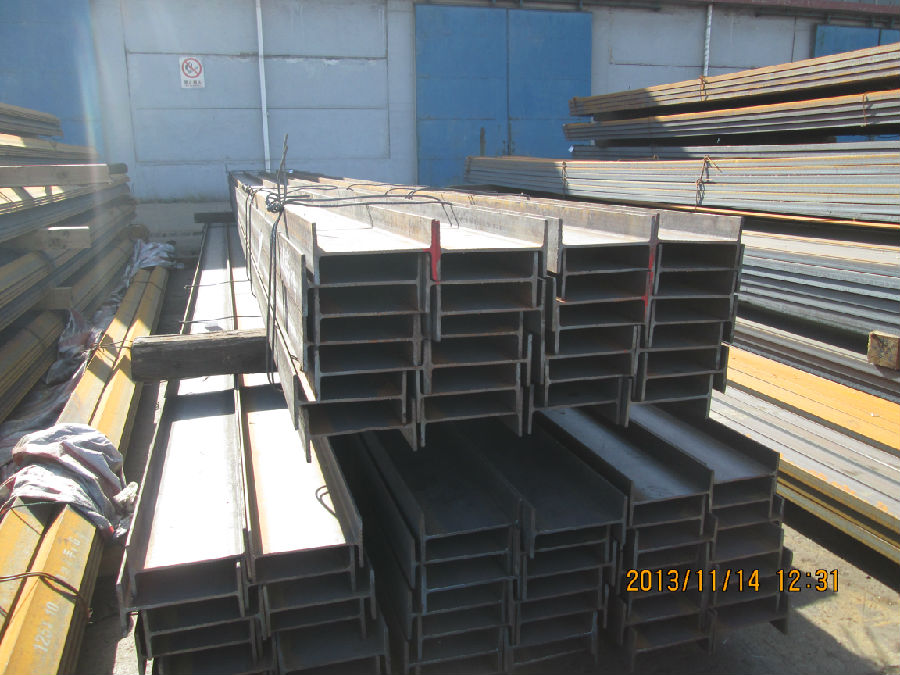
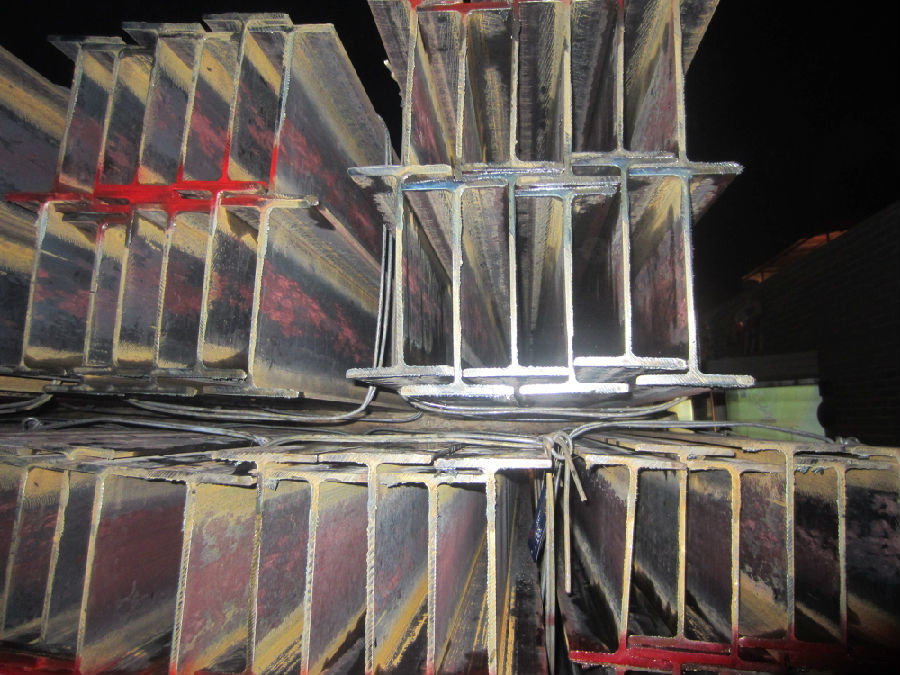
Packaging & Delivery of Hot Rolled Steel H-beam
1. Packing: it is nude packed in bundles by steel wire rod
2. Bundle weight: not more than 3.5MT for bulk vessel; less than 3 MT for container load
3. Marks:
Color marking: There will be color marking on both end of the bundle for the cargo delivered by bulk vessel. That makes it easily to distinguish at the destination port.
Tag mark: there will be tag mark tied up on the bundles. The information usually including supplier logo and name, product name, made in China, shipping marks and other information request by the customer.
If loading by container the marking is not needed, but we will prepare it as customer request.
4. Transportation: the goods are delivered by truck from mill to loading port, the maximum quantity can be loaded is around 40MTs by each truck. If the order quantity cannot reach the full truck loaded, the transportation cost per ton will be little higher than full load.
5. Delivered by container or bulk vessel
Production flow of Hot Rolled Steel H-beam
Material prepare (billet) —heat up—rough rolling—precision rolling—cooling—packing—storage and transportation
- Q: How do steel H-beams perform in areas with high levels of air pollution or chemical exposure?
- Steel H-beams are highly durable and resistant to corrosion, making them well-suited for areas with high levels of air pollution or chemical exposure. The steel used in H-beams is typically coated with protective layers such as galvanization or paint, which provide an additional barrier against corrosive substances in the air or chemicals. These protective coatings prevent the steel from reacting with pollutants or corrosive agents, ensuring the structural integrity and longevity of H-beams even in harsh environments. Additionally, the sturdy design of H-beams, with their cross-sectional shape providing excellent strength and load-bearing capacity, further enhances their performance in areas with high pollution or chemical exposure. Overall, steel H-beams are a reliable and robust choice for construction projects in such areas, offering long-lasting performance and resistance to corrosion.
- Q: How do Steel H-Beams perform in terms of sound insulation?
- When it comes to sound insulation, steel H-Beams, which are frequently utilized in construction, do not offer considerable properties in this regard. The main purpose of steel H-beams, due to their structural design and material composition, is to bear loads rather than provide soundproofing. For effective sound insulation, specific soundproofing materials like acoustic panels, insulation batts, or resilient channels are typically employed. As a result, if sound insulation is a priority, additional measures like these should be taken in conjunction with the use of steel H-beams.
- Q: Can steel H-beams be used for hospitals?
- Yes, steel H-beams can be used for hospitals. Steel H-beams are commonly used in construction projects, including hospitals, due to their strength, durability, and ability to withstand heavy loads. They provide structural support and are often used for framing, foundations, and in the construction of floors and ceilings. Additionally, steel H-beams can be easily customized and fabricated to meet the specific needs and requirements of hospital buildings. Overall, steel H-beams are a reliable and practical choice for hospitals and are widely used in the construction industry for various applications.
- Q: How do steel H-beams contribute to the overall safety of a structure?
- A structure's overall safety is greatly enhanced by the presence of steel H-beams. There are several notable ways in which these beams contribute to safety. To begin with, the unique shape and design of H-beams provide exceptional structural strength and load-bearing capabilities. The horizontal flanges and vertical web of the beams create a strong and rigid framework that can endure heavy loads, such as the weight of the building or external forces like wind or earthquakes. This ensures the building's structural integrity and reduces the risk of collapse. Furthermore, the manufacturing of steel H-beams utilizes top-quality steel, which offers outstanding strength and durability. Steel is renowned for its ability to resist deformation and maintain its shape even in extreme conditions. This property allows H-beams to withstand various stresses and strains that may occur within a structure, such as bending, twisting, or shearing forces. By preventing significant deformations, steel H-beams help maintain the stability and safety of the entire structure. In addition, steel is a non-combustible material, making H-beams highly resistant to fire. If a fire were to occur, the steel H-beams would not contribute to the spread or intensity of the flames. This valuable fire resistance property enhances the overall safety of the structure, providing more time for evacuation and firefighting efforts. Moreover, steel H-beams are commonly used for constructing the primary load-bearing elements, such as columns, beams, and frames, in a building's structural system. By utilizing H-beams, the weight distribution is evenly spread throughout the structure, reducing the likelihood of localized stress concentrations. This even distribution of loads minimizes the risk of structural failure and enhances the overall safety of the building. Lastly, steel H-beams offer great versatility and can be customized to meet specific design requirements. This flexibility allows engineers to optimize the structural design for safety and efficiency. They can ensure that the H-beams are appropriately sized, spaced, and connected to withstand the anticipated loads and potential hazards. In conclusion, the incorporation of steel H-beams in construction significantly enhances the overall safety of a structure. Their exceptional strength, durability, fire resistance, even load distribution, and customization options all play a crucial role in improving the structural integrity and safeguarding the occupants from potential risks and hazards.
- Q: How do steel H-beams contribute to the overall stability of a building?
- Steel H-beams contribute to the overall stability of a building in several ways. Firstly, H-beams are designed to support heavy loads and resist bending, making them suitable for structural applications. The shape of the H-beam provides a high strength-to-weight ratio, allowing it to efficiently distribute and transfer the load from the roof, walls, and floors to the foundation. This ensures that the building can withstand the forces it is subjected to, such as gravity, wind, and seismic loads. Additionally, the use of steel H-beams allows for the creation of long spans, which eliminates the need for excessive columns or supports within the building. This not only provides more open and flexible floor plans but also reduces construction costs and maximizes usable space. The ability to have larger open areas without compromising structural integrity enhances the overall stability of the building. Moreover, steel H-beams offer exceptional resistance to fire, which is crucial for the safety of the occupants and the protection of the building itself. Steel has a high melting point, meaning it can withstand extreme temperatures for longer periods compared to other building materials. This fire resistance provides additional time for evacuation and emergency response, minimizing the risk of structural collapse during a fire. Furthermore, steel H-beams are highly durable and resistant to corrosion, ensuring the longevity of the building's structural framework. Steel is not susceptible to rot, pests, or moisture damage, which can compromise the stability of other materials like wood. The long-term durability of steel H-beams guarantees that the building remains stable and secure over its intended lifespan. In conclusion, steel H-beams contribute significantly to the overall stability of a building by providing strong structural support, allowing for long spans and open floor plans, offering fire resistance, and ensuring durability. The use of steel H-beams enhances the safety, functionality, and longevity of the building, making it an essential component in modern construction.
- Q: H Steel 30, one, 15, how much is 1 tons?
- Small steel: small steel, middle, round, square, flat steel processing and use, similar to large steel, small diameter round steel is often used as building steel
- Q: How do steel H-beams compare to other structural beams, such as I-beams or W-beams?
- Wide flange beams, also referred to as Steel H-beams, offer numerous benefits when compared to other structural beams like I-beams or W-beams. One primary advantage lies in their impressive strength-to-weight ratio. H-beams are constructed to handle heavy loads while remaining relatively lightweight, making them ideal for a wide array of applications. In contrast to I-beams, H-beams possess wider flanges and thinner webs, resulting in a more even distribution of the load. This particular design characteristic enables H-beams to support heavier loads and provide enhanced stability. Furthermore, the wider flanges provide increased resistance against bending and twisting forces, rendering H-beams more rigid and less susceptible to deformations. Another advantage of H-beams over W-beams is their versatility and adaptability. H-beams can be easily modified, cut, and welded to suit specific project requirements. This flexibility allows for greater customization and cost-effectiveness, as it reduces the need for additional fabrication or complex connections. Additionally, H-beams offer superior lateral stability when compared to W-beams. The wider flanges of H-beams facilitate the efficient distribution of lateral loads, such as wind or seismic forces, thereby minimizing the risk of structural failure. Consequently, H-beams are often the preferred choice in regions prone to high winds or seismic activity. Nevertheless, it is important to acknowledge that the selection between steel H-beams, I-beams, or W-beams depends on the specific application and project requirements. Each beam type possesses its own unique advantages and limitations, underscoring the significance of consulting with a structural engineer or expert to determine the most suitable beam for a particular project.
- Q: Can steel H-beams be used for overhead doors or openings?
- No, steel H-beams are not typically used for overhead doors or openings. H-beams are primarily used as structural support in construction projects, such as for beams, columns, and building frames. They are designed to bear heavy loads and provide stability to structures. For overhead doors or openings, other types of materials and designs are generally preferred. Overhead doors are typically made of steel or aluminum panels, which are lighter and easier to operate. These panels are designed to be hinged together, allowing them to roll up into a coil or fold up overhead when opened. This design allows for smooth operation and efficient use of space. Using H-beams for overhead doors or openings would not be practical or efficient. Their weight and size would make them difficult to operate, and their design is not suitable for roll-up or folding mechanisms. Additionally, H-beams are typically used for load-bearing purposes, so using them for openings could compromise the structural integrity of the building. Therefore, it is recommended to use the appropriate materials and designs specifically designed for overhead doors or openings, rather than steel H-beams.
- Q: Can steel H-beams be used for supporting swimming pool enclosures?
- Yes, steel H-beams can be used for supporting swimming pool enclosures. Steel H-beams are commonly used in construction for their strength and durability. They provide excellent support and can withstand heavy loads, making them suitable for supporting swimming pool enclosures. Additionally, steel H-beams are resistant to corrosion, which is crucial in a swimming pool environment where they will be exposed to water and chemicals. However, it is important to consult with a structural engineer or a professional contractor to ensure that the size and specifications of the steel H-beams are appropriate for the specific requirements of the swimming pool enclosure.
- Q: Can steel H-beams be used for overhead crane systems?
- Yes, steel H-beams can be used for overhead crane systems. H-beams are commonly used as structural supports in construction and industrial applications, including overhead crane systems. Their strong and durable nature makes them well-suited for supporting the weight of cranes and the loads they carry.
Send your message to us
High Quality Hot Rolled Jis Steel H Beam
- Loading Port:
- Tianjin
- Payment Terms:
- TT OR LC
- Min Order Qty:
- 25 m.t.
- Supply Capability:
- 1000 m.t./month
OKorder Service Pledge
OKorder Financial Service
Similar products
Hot products
Hot Searches
Related keywords
